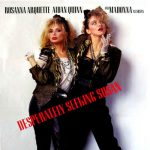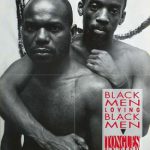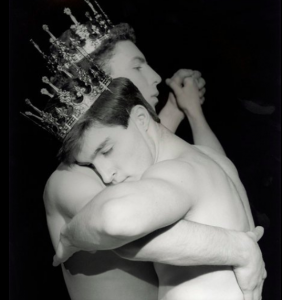I have some feels about this topic, largely based on my experiences writing and thinking about sexual assault and harassment, and on my experiences as an event and school manager, dance teacher, and DJ. But mostly as a consumer and attendee: someone who’s tried to get help at events.
With specific regards to a code of conduct:
A CoC is just one part of a range of strategies for responding to and preventing sexual assault and harassment (and other dangerous and/or illegal anti-social behaviours). It’s important to think about the _purpose_ of a CoC. This is one for my current event, Jazz BANG 2-5 May 2019. I’ve just seen an error in there where I’ve clearly fucked up the html, so I’ll fix that. Lesson there: the first draft of a CoC is never the best. This is about the.. tenth? draft of mine. And It’s definitely not perfect.
What should a CoC say? I think of it as:
- a statement of the organisation/host’s values;
- a public list of ‘rules’ or a statement about how this event abides by laws regarding anti-social/dangerous behaviour.
Who is the intended audience for a CoC?
- The staff and organisers of the event/space are the first audience: this document should remind them of the things they value and hold dear. It should be a positive rallying call: “We believe people have a right to safety. We believe that lindy hop today should honour its black roots. etc etc”
- A CoC addresses contractors and casual staff: visiting teachers, one-off volunteers, musicians in visiting bands, etc. It tells them what this space values, and the general attitudes about safety and mutual respect. This suggests to marginalised peeps that they can be safe here, and ask for help, but it also says to potential (or existing) offenders that their behaviour will not be tolerated (so hopefully it works as a deterrent).
- A CoC addresses punters/customers, students, guests and attendees. People who pay to be there. It is a public statement of values, an invitation, and a welcome for people. It’s also a warning to offenders: don’t do that here, because we will act on it.
More broadly, a CoC can also work as a smoke screen, or token gesture. eg I know offenders who’ve publicly declared that they have and support a CoC, with the intent that this action would then absolve them of future offences: ‘I can’t be an offender, I have a CoC and I support safe spaces’.
Structurally, a CoC is useful if it has:
- a statement of intent or value statement (what we value, who we are, what we believe in)
- a code of conduct (what we will not tolerate)
- a specific sexual harassment policy that outlines what the local laws define as sexual assault and harassment, and then how this manifests in a dance context
-> a reminder that businesses (eg in NSW, Australia) have a legal obligation to work to protect employees and customers from sexual harassment and assault - the very first thing a CoC needs is a helpline: how to get help in a hurry (phone number, email, person for f2f)
- then a description of the process (what happens) after reporting
- and a description of the consequences for offenders.
—Articulate the ‘unspoken rules’—
I think it’s essential to have a CoC and to never rely on ‘common sense’, because the lindy hop world is characterised by travel and travellers: we are from different cultures and countries, we speak different languages, and our countries/regions have different laws. So there is no _common_ sense, just a lot of different types of sense that regularly contradict each other.
I’ve found this idea of ‘unspoken rules’ needs to be interrogated when we’re doing this work. eg I’ve found that women reporting offenders may say “He made me feel gross.” Which is a legitimate comment. But then, if we want to tell men not to ‘be gross’, we need to know exactly what it is that ‘felt gross’. So it’s important to encourage women (and men and everyone else) to articulate what it was that ‘felt gross’. For example, ‘feel gross’ might include:
- standing a bit too close than is comfortable
- maintaining eye contact too long, or ‘following her with his eyes’ wherever she was in the room
- touching her frequently and in many ways from the very first meeting
- asking her to dance repeatedly
- buying her drinks
In isolation, there’s nothing wrong with these actions. But it’s the combination of actions, and the duration or number of these actions that makes someone ‘feel gross’. Looking at this pattern, I’d say that this man is dominating a woman’s time and physical and social space. If he’s continually speaking to her, asking her questions, etc etc, he’s also isolating her from other people: he’s dominating her time and space. If this is happening to a brand new very young woman dancer by an older man, then we would hear alarm bells.
But all these ‘feel gross’ in more ways in some cultures than in others. And we often know the difference between someone who is accidentally inappropriate and someone who is deliberately inappropriate or carelessly inappropriate.
So if our CoC is meant to be useful, we need to have specific examples of what’s not ok. eg, a ‘How does this relate to dancing’ section.
After you’ve put a lot of research and work into this, you need to think about how you deliver this information. I feel a multimodal approach is best:
- a digital version on the website
- a paper version on a page at a dance
- an abbreviated, visual or comic version online, on a poster at events, on flyers/postcards or other take-home paper media
- short spoken comments and intros in classes and at parties.
From here, though, you realise quite quickly that a CoC means nothing if you don’t also have a range of other tools in place. You need a) response strategies, b) prevention strategies, c) training and support for staff, d) legal advice for drafting documents and enforcing rules.
Responding to incidents:
- what is your response strategy if someone does make a response? Are you staff trained in this? Are their responses consistent?
- do you have a report making process to record the incident?
- if you do eject someone from an event, how long are they ‘banned’? How do you tell staff that someone is banned? What do they do if the banned person turns up at events – when do they call the police?
- what is the actual step-by-step process of ejecting someone from an event? Who does it? When? How?
- if you ‘warn’ someone, what are the consequences if they repeat offend?
And so on and so on.
I’m personally very not ok with approaches that focus exclusively on responding to incidents, and that use a top-down hierarchy to enforce consequences. If we just have a boss ‘telling people off’ and banning people to ‘protect women’, then we are just maintaining the patriarchal status quo. We’re not actually changing culture.
I believe that we need to dismantle this. So we need to talk about _prevention_. And that’s where things get complicated.
Threats of consequences for offenders do not work as dissuasion. If it did, then the existing laws would be adequate.
How do we change the current lindy hop culture?
We need to look at class culture and the way teachers speak to each other, students interact, etc etc.
….and lots of other stuff.











